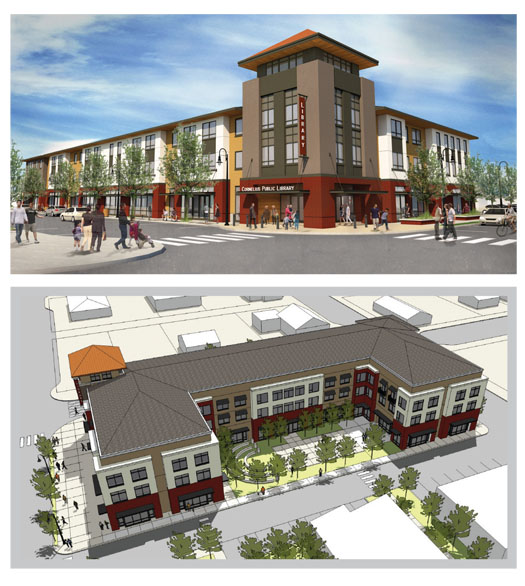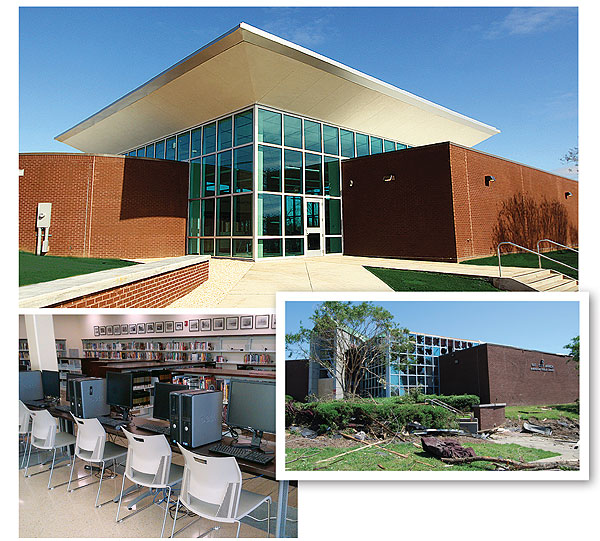Marta Murvosh
7 Articles
Last 30 days
Last 6 months
Last 12 months
Last 24 months
Specific Dates
From:
To:
Life + Library | Innovation
Libraries in Chicago, San Francisco, and Cornelius, OR, have taken advantage of economies of scale to plan new locations in the same building as affordable senior housing developments. By working together, they maximized resources to improve the lives of all neighborhood residents.
Community Central | Library by Design, Spring 2016
When the recession hit pause on the plans Kansas’s Wichita Public Library (WPL) had to replace its aging central building, library leaders used the opportunity to tap into community feedback. As a result, the replacement will offer features and services tailored to patrons’ needs and will support the city as it moves into the future by fostering civic growth and engagement.
The Comeback Kids | Library by Design, Fall 2014
Vision and determination are two of the qualities that various library leaders and architects around the country used to rebuild libraries demolished in a variety of natural disasters. A number of these libraries have emerged better connected to their communities and stronger than before.
Embracing Austin, Inside and Out | Library by Design, Fall 2013
With a rooftop reading garden and reading porches on three floors, the new Austin Central Library, TX, in the city’s downtown will embrace the community’s love affair with books and nature. “Austin is an outdoor kind of city,” says John W. Gillum, Austin Public Library (APL) facilities process manager. “We tried to bring the outdoors indoors in this building.” Construction started in May on the as-yet-unnamed $90 million, 198,000 square foot new Central Library, which will be built of wood, metal, and native limestone. (Gillum says that the APL Friends Foundation, a merger of the Friends and the foundation, is working on getting a large donation and that may result in a name.)
Don't Let the Book Bugs Bite
In August 2012, bed bugs were found in lounge chairs at Wichita Public Libraries Central Branch, KS. Director Cynthia Berner Harris tackled the issue head-on. Like many library managers dealing with bed bugs, she closed the building for treatment and informed the public about the library’s response. She also offered the public an insider’s view by recording the library employee bed bug training and broadcasting the video on the Wichita City cable channel. Berner Harris says. “One thing that we did differently from some other libraries was the degree to which we talked to the community.”
Growing Room: St. Louis Public Library's Grand Central Renovation | Library by Design
There was never a doubt that the St. Louis Central Library building would remain a library and be restored, However, what was in doubt was the footprint. The original plan called for a proposed expansion outside the building’s original granite walls. But a local architectural firm took the risk of trying to convince library leaders that was the wrong way to go.
Customizing User Design To Fit Your Community's Needs | Library by Design, Fall 2012
The challenge of providing services to a changing community while operating more efficiently made the Denver Public Library’s (DPL) leaders realize they couldn’t afford to be all things to all people—at least not at every branch. After zeroing in on each branch’s demographics and user patterns, librarians ascertained three different user groups and developed different strategies, such as refining the service delivery, and put them into play in 2005 and 2006. “It really is borrowed from marketing from the business world,” says Susan Kotarba, director of public services at DPL.
ALREADY A SUBSCRIBER? LOG IN
We are currently offering this content for free. Sign up now to activate your personal profile, where you can save articles for future viewing








